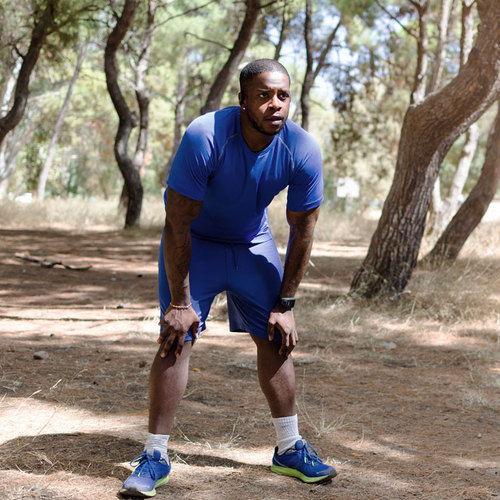Unlock Your Lungs - Breathing for Beginning Runners

Breathing: Air in. Air out. It's a simple thing. Right? Many beginning runners would disagree. My beginning runners often tell me, "My legs are fine, but I just can't seem to control my breathing." So, what's the deal?
Because we don't have to focus on our breathing in our everyday moving around, it seems like a no-brainer that we wouldn't have to focus on it when we run. Usually the problem lies in new runners unconsciously keeping their breathing at the same rate as their foot strike. Faster feet means faster breathing. Seems like a logical thing. But faster breathing often results in panting. Your body needs a good deep inhalation in order to get oxygen deep into the lungs where it can be transpired from the alveoli into the bloodstream. Better oxygenated blood means more oxygen getting to the muscle where it's used to make energy. More energy means more endurance. Rapid breathing is shallow breathing which deprives your body of the much-needed oxygenated blood.
So, how do you get in control and unlock your lungs so your breathing doesn't seem so labored? It takes a little practice. Efficient breathing techniques can be learned by anyone. Spending a few runs focusing on your breathing can ensure more enjoyable and relaxing runs. One exercise that I've found helpful for new runners actually starts with walking. This can be done on a treadmill or outside.
1. Go for a 1-minute walk. During your walk, focus on your breathing as you take long deep breaths. Concentrate on expanding your belly as you breath in instead of expanding your chest. This is called "Belly Breathing." Keep an even breathing pattern during the walk. Pay attention to your stride. More than likely, you're taking multiple strides during each inhale as well as each exhale.
2. Now, pick up the pace for a 1-minute brisk walk while maintaining the same deep even breathing pattern. It may take a little concentration to keep your breathing rate from becoming faster as you pick up your walking pace, but you'll be surprised how easily you can actually control it by just paying a little attention to it.
3. Now, pick up the pace for a 1-minute slow jog. Focus on keeping the same even breathing pattern. This may be a little more challenging, but you can do it. Pay attention to the number of strides you’re taking with each inhale and exhale. (To count a stride, just count each time your right foot hits the ground.)
4. Finally, pick up the pace to a 1-minute run. Focus on keeping the same even breathing pattern you've been keeping since the walk. Take note of the number of strides you’re taking for each inhale and exhale. They may not be the same.
The first few times you try this exercise, you may find it challenging to keep that even breathing pattern through the progressively faster intervals, but keep practicing, and you'll get it. After a few breathing practice drills, give it a try on a “real” run. Begin by running at a slow pace. Focus on belly breathing as you take in a long slow breath. Then release this breath with a long slow exhale—making a complete breathing cycle about 6 strides. To make this easier, try inhaling over 4 strides and exhaling over 4 strides. (It's more important to take a deeper inhale. So, if your inhale takes more strides than your exhale, that's fine.)
There are no hard and fast rules. Depending on your stride, your breathing cycle (inhale/exhale) may take 4 strides or 8 strides. If associating your breathing with your stride doesn't work for you, try counting—4 counts/inhale, 4 counts/exhale. With practice, this will become second nature and you will no longer need keep track of strides or count.
After practicing, if you're still experiencing "tight lungs," and you feel like you're unable to get in enough air, check in with your doctor. You could be experiencing sports induced asthma.

